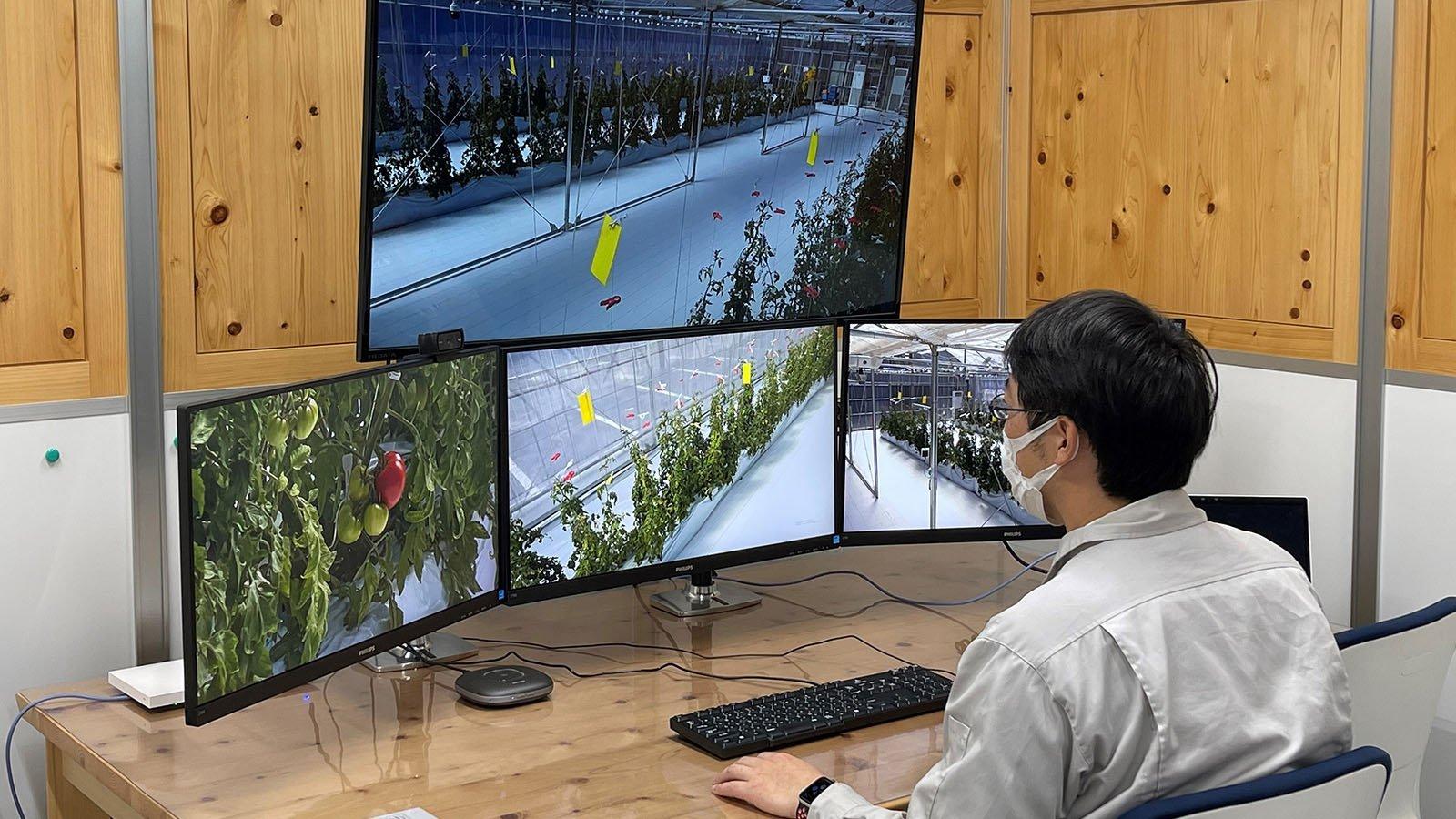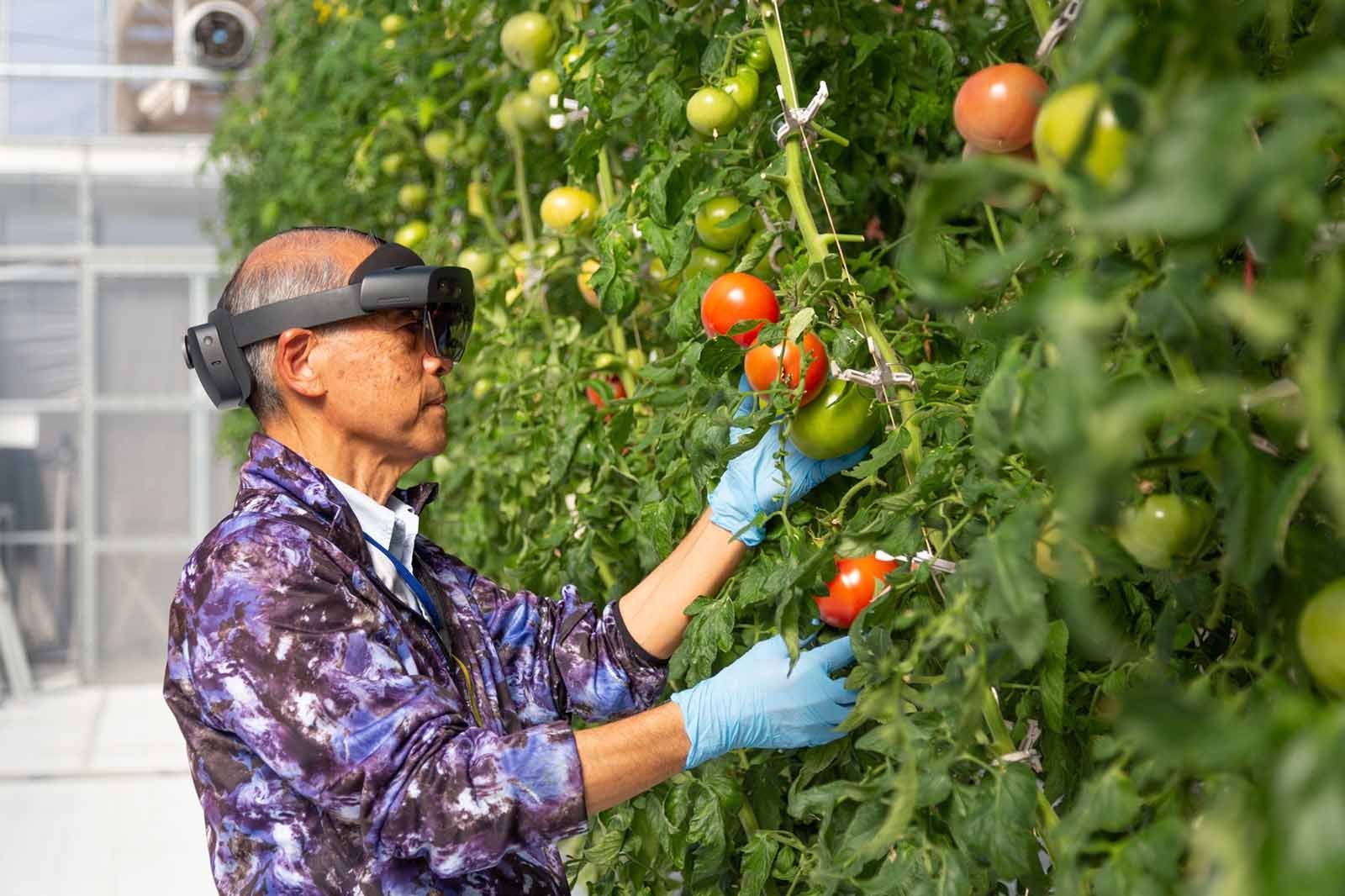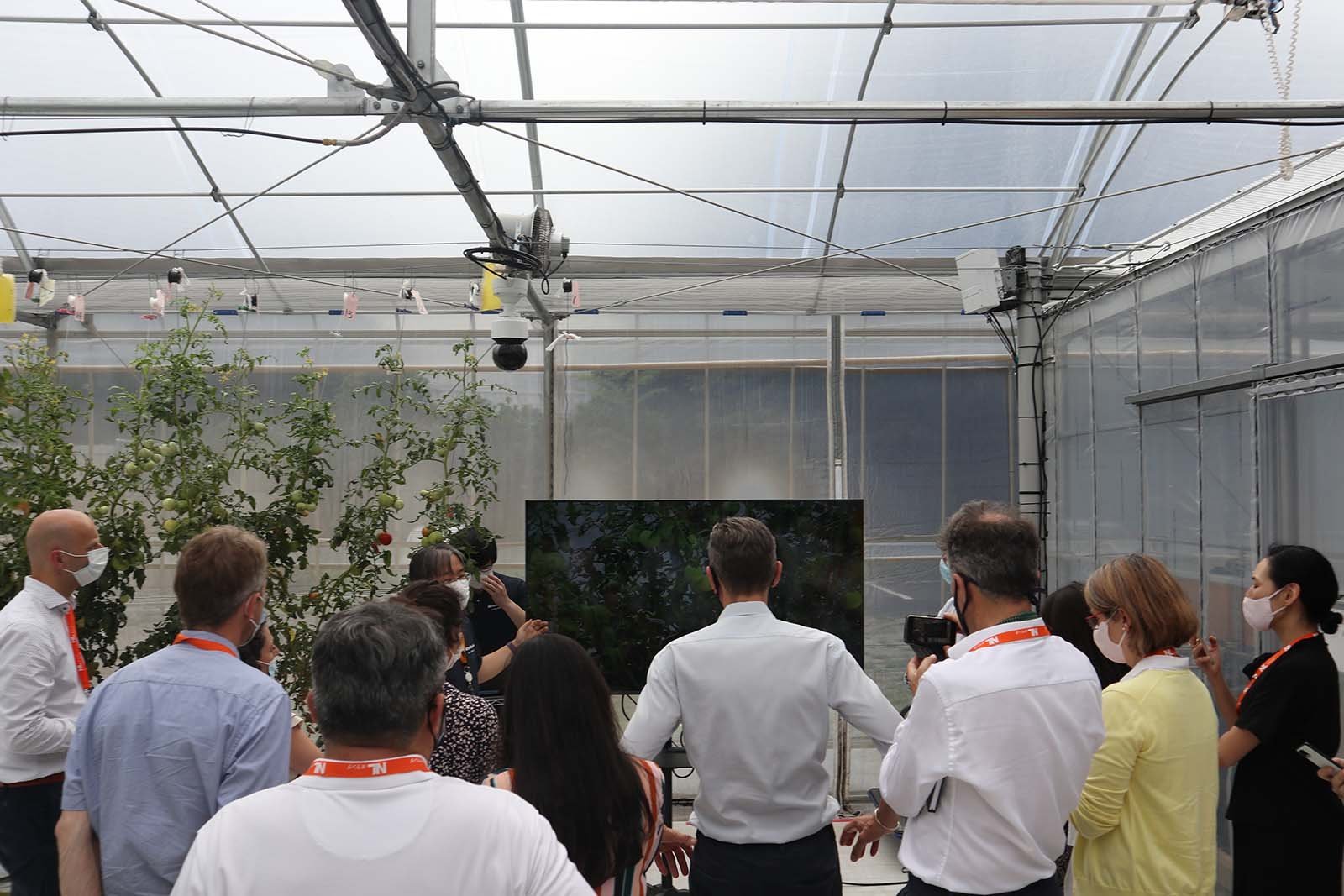Can Tokyo-Style Smart Farming Help Solve the Global Food Crisis?
A Tokyo-based project implementing cutting-edge agriculture through private 5G is garnering worldwide interest.

Cutting Down on Labor Needs in Agricultural Work
The dwindling birthrate together with the aging population in Japan have presented a serious issue for Japanese agriculture—namely, a decline in the amount of agricultural workers in the country. The number of key agricultural workers in private farming enterprises decreased by 394,000 (22.4 percent) from 2015 to 2020, from about 1.76 million to 1.36 million.
The 2020 Census of Agriculture and Forestry in Japan, published by the Ministry of Agriculture, Forestry and Fisheries noted that, of these key agricultural workers, 69.6 percent were 65 years old or older—demonstrating a 4.7 percent increase in the average age of laborers over five years, with fewer young workers overall. It's clear that if this trend continues, there will be a sharp decline in Japan's food production capacity and in the international competitiveness of Japanese agricultural exports.
As such, establishing efficient and highly productive agricultural systems and reducing labor needs for agricultural work are of the utmost importance in Japan. Municipalities, organizations and companies across the country are working on innovative smart agriculture initiatives to achieve this outcome. One is a project that was carried out by the NTT AgriTechnology Corporation, a Japanese company working to implement the advanced information and communications technologies (ICT) of the Nippon Telegraph and Telephone Corporation in the field of agriculture.
Farming Newbies Grow High-Quality Tomatoes Through Remote Instruction
NTT AgriTechnology, the Tokyo Development Foundation for Agriculture, Forestry and Fisheries, and Nippon Telegraph and Telephone East Corporation (NTT East) established this three-year project—referred to formally as a collaboration agreement for the implementation of cutting-edge agriculture using private 5G—in 2020. Its aim is to create a Tokyo-based model that could be used to bolster the future of Japanese agriculture. Private 5G provides more stable communication than public 5G and can better respond to immediate problems with crops that need to be addressed on a regular basis.
The project involved setting up greenhouses equipped with private 5G in Chofu City, in Tokyo prefecture, and using them to grow tomatoes. Ultrahigh-resolution cameras, smart glasses and other technologies were also utilized. The environments in the greenhouses were managed fully automatically, with sensors that measured factors like the temperature and indoor CO2 concentration in order to optimize the photosynthesis of the crops.

The project is now in its third year. Nakanishi Masahiro, a project manager of the corporate strategy planning department at NTT East and a core member of the team that set up NTT AgriTechnology said, "Workers with no farming experience were able to grow high-quality tomatoes with remote instruction. We've even had better yields from the second year onward, so results have been great." The project has also managed to establish a local production for local consumption model, with the tomatoes produced in these greenhouses sold within Chofu City or given to local elementary schools.

Cutting-Edge Greenhouses See Visitors From Around the World
The Netherlands and Spain are two countries that have succeeded in using advanced environmental management technologies and labor optimization to establish large-scale agricultural systems. The Netherlands is a particularly compelling example in that it is the second-largest agricultural producing country in the world—with about 40 percent of the area of Japan. Representatives from NTT AgriTechnology visited the Netherlands for agricultural research and were inspired by the semi-automated and standardized operations they saw in the country's large-scale greenhouse horticulture systems.
To implement something similar in Japan, however, they would have to cope with various environmental changes—including the seasons, with summer's heat waves and typhoons and winter's strong snows and sea winds—and compensate for the lack of growers and workers with experience in large-scale greenhouse horticulture. As such, their goal was to develop a facility that could handle a wide variety of circumstances. This was done not only through the expertise the representatives gleaned overseas but also through the addition of monitoring systems that focus on human factors like labor and work management, as well as the digitalization of the facility itself.

Already agriculture professionals and researchers from across the world have come to Tokyo to observe and examine this example of agriculture utilizing private 5G. Regarding the benefits of the project being based in Tokyo rather than elsewhere in Japan, Nakanishi said, "I think the reason we've gotten so much attention for this is precisely becausethis smart agriculture site is located in a city like Tokyo that's easy to visit from abroad."
NTT AgriTechnology is currently considering the dissemination of these technologies overseas, backed with training on how to use them. Indeed, this Tokyo-based agricultural system could be a key to solving not only the issues faced in the Japanese agricultural world but also the global food crisis.